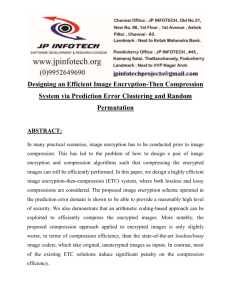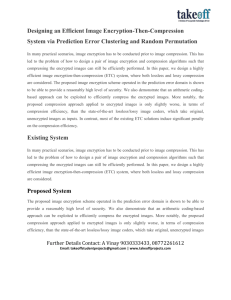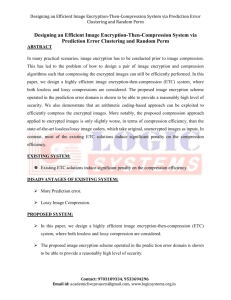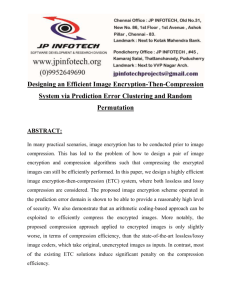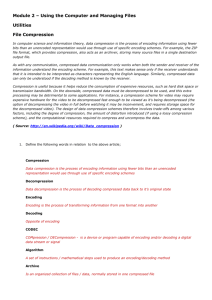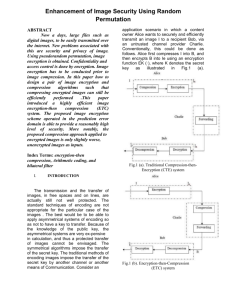COLOR CODED CRYPTOGRAPHY Abstract
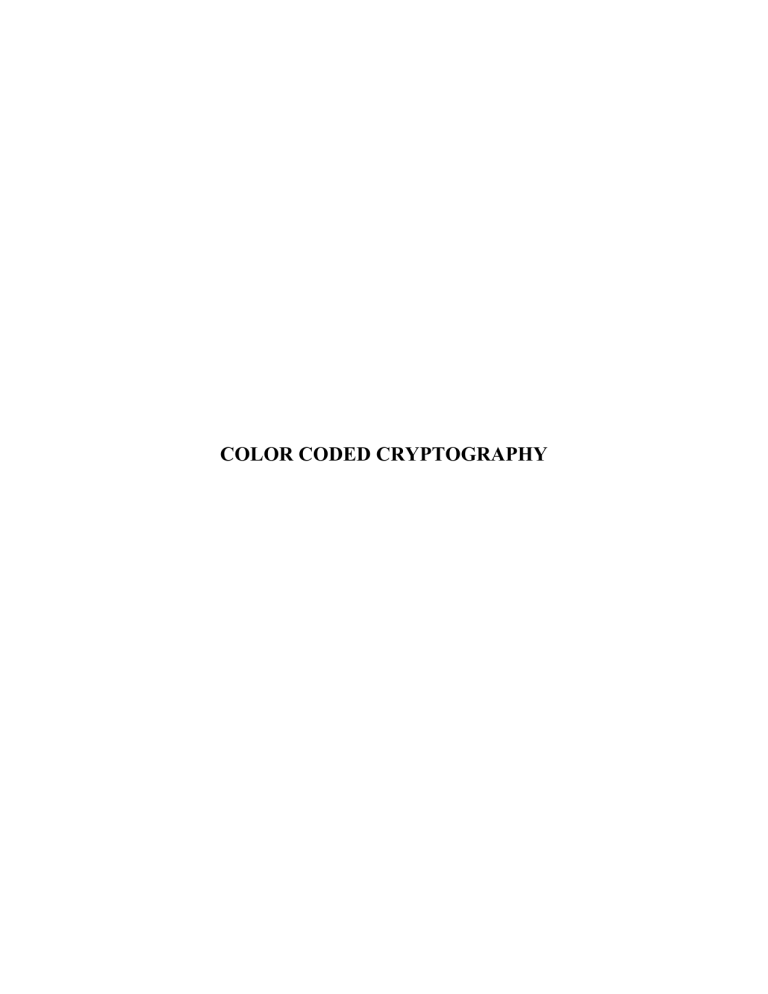
COLOR CODED CRYPTOGRAPHY
Abstract:
Data encryption technique converts data into a unreadable format so as to protect the information from external intrusion. It is thus useful in ensuring the privacy and security of the information transferred or shared between the systems. Text compression algorithms can be used to compact the text stored in the file and reduce the size of the file. It helps to reduce the consumption of resources, such as hard disk space or transmission bandwidth. Here, we propose a color coding scheme that can be used f or data encryption which represents text in the form of colored blocks by grouping together binary bits and assigning them colors along with Huffman encoding scheme which is used for lossless text compression.
INTRODUCTION:
Color Coded Encryption is a technique of implementing a symmetrical system for security purpose. The symmetrical system is implemented by encryption of text by converting it into image format. To reduce the size of the image file, compression algorithms are to be implemented at the encryption stage. The converse process is used to generate at the destination system to recover the data in the original format.
PROPOSED SYSTEM:
The problem definition is to design a system capable of performing lossless data compression on binary data using encryption and decryption. It should also function as a solution to the data protection needs of the user, holding a significant role in environments where privacy of data is critical thus contributing to information security. The encoding and compressing schemes need to be computationally and functionally efficient and must look up to provide an optimal solution to the above mentioned problems. The system must be capable of taking input in the form of text files whose binary representation is processed and thereby encrypted in a color image.
Appropriate compression methods (Huffman encoding) are used on the encrypted data to ensure a suitable trade-off between the tasks performed and space complexity issues involved.
The design should achieve the best possible compression ratio, with the limited resources of a present-day PC. As a result, there are strict constraints on the memory usage and the compression speed of the design. The system presently aims to work with text file in standard
ASCII-based format. The proposed system works on two sides: On the Sender side, this technique compresses the file using Huffman encoding and then encodes the binary file data into a color code encrypted JPEG image file. While On the Receiver side, it does the reverse i.e. decrypts the image and then decompresses it, bringing back the binary text file.
Block Diagrams:
Fig1: Block Diagram of Encryption system on the Sender side for Text files
Fig 2: Block Diagram of Decryption module on the Receiver side for Text files
CONCLUSION
The system provides encryption and decryption of text files, audio and media files. The use of Huffman encoding and decoding scheme for data compression helps in dealing with the complexities of space. The proposed system works on two sides: On the Sender side, this technique is responsible for generating JPEG image from an ASCII text file; it does this by first compressing the file using Huffman encoding scheme. The vector generated by the compression is then encoded into a color code encrypted JPEG image file.
On the Receiver side, it does the reverse i.e. decrypts the image which gives back the encoded vector and then decompresses it, bringing back the ASCII text file. The major advantage of the proposed system is data security. Depending on the availability of time and resources, we hope to work on the future enhancements for this system. With the assistance of a good printer and high calibrated scanner, this system can be extended to incorporate a hard copy version of the encrypted information which can be scanned at the receiver’s end using a high-end scanner.
Another extension can be the use of the system on other formats of files such as audio and video files, images etc.
REFERENCES :
[1] G. O. Young, “Synthetic structure of industrial plastics (Book style with paper title and editor),” in Plastics, 2nd ed. vol. 3, J. Peters, Ed. New York: McGraw-Hill, 1964, pp. 15–64.
[2] Data Encoding and Compression using ASCII, VEDA Institute, Hyderabad (published in July
2009) – ACM Journal
[3] Data Encryption Standards - Roy F. Van Buren, CPA CISA (c) 1990 – ACM Journal
[4] Data Compression via Textual Substitution - JAMES A. STORER AND THOMAS G.
SZYMANSKI, Princeton University, Princeton, New Jersey – ACM Journal
[5] Data Compression - DEBRA A. LELEWER and DANIEL S. HIRSCHBERG Department of
Information and Computer Science, University of California, Irvine, California 92717 – ACM
Journal
[6] Lossless Data compression techniques - Klaus Holtz, Eric Holtz, Omni Dimensional
Networks , San Francisco , CA 94109 – IEEE Research Paper
[7] RGB Coloured Image Encryption Processes Using Several Coloured Keys Images - By Rami
El Sawda (IEEE senior member) & Habib Hamam (IEEE senior Member) – IEEE Research
Paper .
[8] "Data Can Now Be Stored on Paper" (http:/ / www. arabnews. com/?page=4& section=0& article=88962& d=18& m=11& y=2006) by M. A. Siraj, Arab News (published November 18,
2006)

